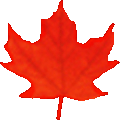
Common menu bar links
Institutional Links
-
Translation Bureau
Language Portal of Canada
-
TERMIUM Plus®
-
Index N
- namable
- nameable
- names of Canadian universities (Linguistic recommendation from the Translation Bureau)
- names of government departments (Linguistic recommendation from the Translation Bureau)
- nano-
- nas-
- naso-
- National Assembly
- National Capital Region
- nay
- NB
- N.B.
- NDT
- near
- necessary prerequisite
- need
- needs
- neither … nor
- neo-
- Net (Linguistic recommendation from the Translation Bureau)
- neuro-
- never used to
- New Brunswick
- Newfoundland and Labrador
- Newfoundland Daylight Time
- Newfoundland Standard Time
- new French spelling (Linguistic recommendation from the Translation Bureau)
- new innovation
- new recruit
- Nfld.
- NL
- N.L.
- no
- noci-
- noct-
- nocti-
- non-
- nona-
- non-flammable
- non-inflammable
- non sequitur
- Northwest Territories
- Norwego-
- notify
- not quite
- noun
- noun clause
- noun phrase
- noun used as an adjective
- Nova Scotia
- Nowel
- NS
- N.S.
- NST
- NT
- NU
- nulli-
- number
- numbers: age
- numbers: clarity
- numbers: comparative and inclusive numbers
- numbers: consistency
- numbers: decimal fractions
- numbers: governmental and historical designations
- number sign
- numbers in compound adjectives
- numbers: market quotations
- numbers: mathematical usage
- numbers: money
- numbers: names of organizations
- numbers: plurals
- numbers: quantities and measures
- numbers: ratios
- numbers: reference numbers
- numbers: Roman numerals
- numbers: round numbers
- numbers: spelled-out numbers
- numbers starting a sentence
- numbers used as nouns
- numbers: votes and scores
- number symbol
- numeric date
- Nunavut
- N.W.T.
Proactive Disclosure
Important notice
Writing Tips has been archived and won’t be updated before it is permanently deleted.
For the most up-to-date content, please consult Writing Tips Plus, which combines content from Writing Tips and The Canadian Style. And don’t forget to update your bookmarks!
Search and Functionalities Area
numeric date
The all-numeric form of dating may be more appropriate than a date written in full for such purposes as office memorandums and chronological files and on documents such as certificates, forms and plaques that are presented in both official languages.
Recommended format
Because different formats are used for writing numeric dates, confusion can easily arise. In a date such as 03/04/15, for example, the reader cannot be sure whether the intended date is March 4, 2015, or 3 April 2015. (And if the document is old, the date might even represent April 15, 2003.)
For the sake of clarity, therefore, write a numeric date in one of the formats recommended by the International Organization for Standardization (ISO).
The ISO recommends writing numeric dates in descending order-year, month, day-with the year written in full. The dates can be presented in three different ways:
- with hyphens: 2014-08-16
- with spaces: 2014 08 16
- without hyphens or spaces: 20140816
The last format should be used only when space is limited.
Note: For Government of Canada documents, the Translation Bureau recommends the first option, i.e. the use of a hyphen to separate the elements of the date:
- 2014-03-04 (stands for March 4, 2014)
Additional information
For information on the recommended order for the elements in a date in English and in French, see DATE: ORDER OF ELEMENTS (LINGUISTIC RECOMMENDATION FROM THE TRANSLATION BUREAU).
© Public Services and Procurement Canada, 2025
TERMIUM Plus®, the Government of Canada's terminology and linguistic data bank
Writing tools – Writing Tips
A product of the Translation Bureau


